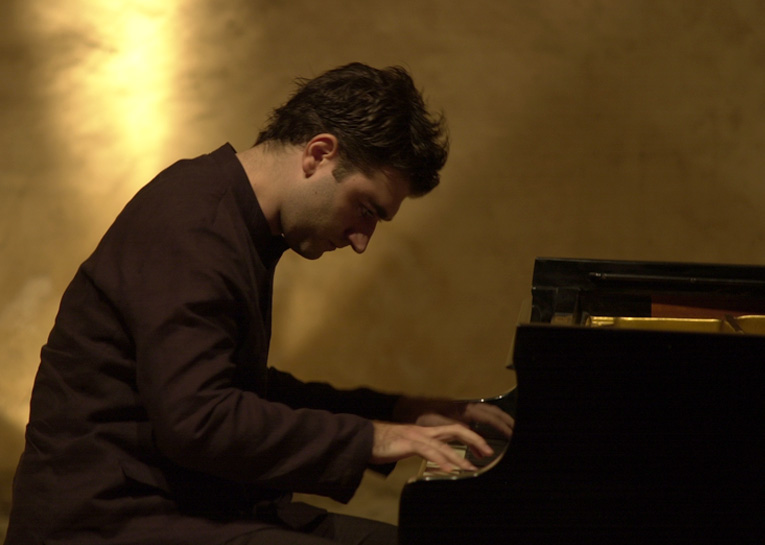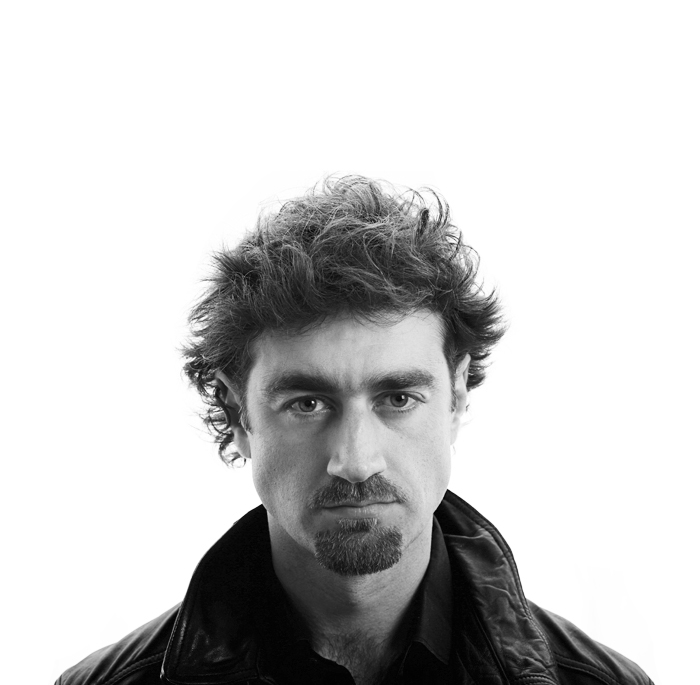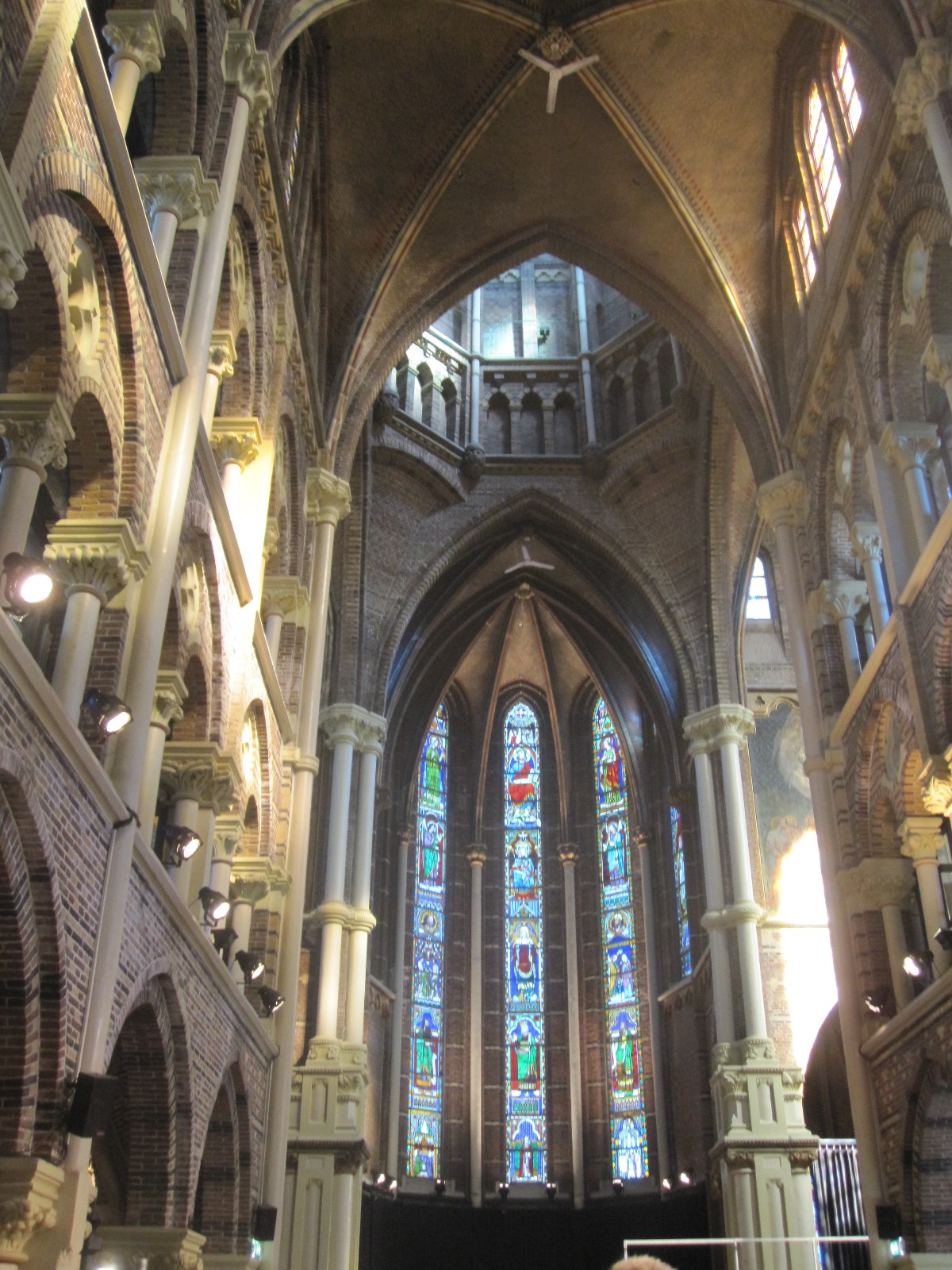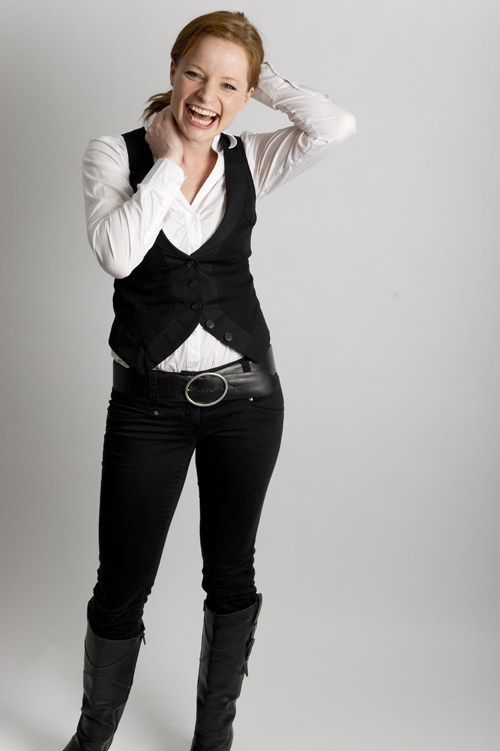Antonio Simón – Swan Songs / Opus Ultimum – Pianofortes in de Posthoorn
11 juni 2014 | 20.15 uur
| ,
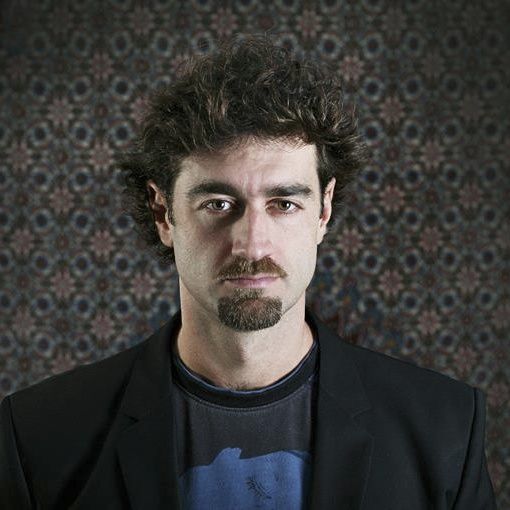
Posthoornkerk, Haarlemmerstraat 124, 1013 EX Amsterdam
English text, please scroll down
De jonge Spaanse fortepianist rondt zijn studie fortepiano af met het recital ‘Opus Ultimum‘ – dat de ondertitel “Zwanenzang” kreeg – in de Posthoornkerk.
Het recital bestaat uit steeds de laatste werken van bewuste componisten of hebben op een andere manier te maken met de dood.
De liederen worden gezongen door de flamboyante, jonge mezzosopraan Anna Traub en de Mexicaanse bariton Emmanuel Franco.
Bijzonder is ook, dat op drie verschillende historische pianofortes wordt gespeeld:
– de twee stukken van C.P.E. Bach op de pianoforte vleugel van de hand van Johann Zahler (vroeg Weens mechaniek) uit ca. 1805
– het werk van Beethoven op de pianoforte vleugel gebouwd door John Broadwood (Engels mechaniek) uit 1804
– de stukken van Schubert en Brahms op de pianoforte vleugel gebouwd door Joseph Dohnal (Weens mechaniek) uit ca. 1825
Antonio Simón is een leerling van Richard Egarr.
Het concert is het eindexamen voor zijn master-opleiding aan het Conservatorium van Amsterdam. De examencommissie bestaat uit onder meer Willem Brons, David Kuyken en Therese de Goede.
Het concert is tevens een voorproefje op het Geelvinck Fortepiano Festival in oktober 2014 in de Posthoornkerk.
Programma ‘Opus Ultimum – Swan Songs’
Carl Philipp Emanuel Bach (1714-1788)
‘Andenken an dem Tod’, Wq. 189/12(1781)
C.P.E. Bach
Freie Fantasie in fes-moll klein, Wq. 67(1787)
Ludwig van Beethoven (1770-1827)
‘Bagatelles’, Op. 126 (1824)
Franz Schubert (1797-1828)
Sonata no. 21 in Bes groot, D. 960, (1828)
Johannes Brahms (1833-1897)
‘O Tod, wie bitter bist du’, in e klein, Op. 121 nr. 3 (1896) uit ‘Vier ernste Gesänge’
Voor meer uitgebreide informatie, klik hier.
About the program:
Spanish pianist Antonio Simón has created a thematic concert with the last keyboard works ‘Opus Ultimum – Swan Songs’ of composers C.P.E. Bach, Ludwig van Beethoven, Franz Schubert, and Johannes Brahms. Antonio will accompany mezzo-soprano Anna Traub in the song by CPE Bach and baritone Emmanuel Franco in the song by Johannes Brahms.
Some works were literally completed at the composer’s deathbed. Others mark the end of the composer’s creative period. Some parts show sadness. Others show happiness.
Did these composers have the approaching end of their lives in view when they created these compositions? Does their last work contain a message: a reflection on their lives or those of their loved ones? Was it an effort to push the compositional boundaries far into the future?
These Swan Songs excite deep emotional feelings in many of us, either in relation to the sometimes tragic death of their composers, in relation to memories of loved ones that are no longer with us, or simply because of their musical beauty. In all instances the outcome is positive.
Antonio Simón invites you to join his thematic concert this evening and be touched and inspired.
The concert will be Antonio Simón’s final exam for his master study in fortepiano at the Conservatory of Amsterdam.
For his performance, Antonio Simón has selected one historical instruments from the Sweelinck collection of over eighty historic keyboard instruments of Museum Geelvinck, one from the restorer of fortepiano’s Gijs Wilderom and one from his teacher, Richard Egarr.
Antonio Simon
“A refined artist” Alisa Čakarun (Slobodna Dalmacija)
Born in Jaén (Spain), he holds modern piano degrees from both the Madrid Real Conservatorio Superior de Música and the Zagreb Music Academy. Among his teachers were Ana Guijarro, Vladimir Krpan and Javier Herreros.
Antonio is lately devoted to period instruments performance and is currently finishing a Master in Fortepiano under the guidance of Richard Egarr in the Conservatorium van Amsterdam.
A prizewinner in several piano competitions (“Internacional de Andorra”, “Internacional Ciudad de Palma”, “Ciudad de Albacete”, “Manuel de Falla”), he has performed throughout Spain, Italy, Portugal, Croatia and Russia in important festivals as the Donatske Veceri in Zadar and the Quincena Musical in San Sebastián. He has also recorded for Spanish Radio Clásica (RNE) and the Albert Moraleda label.
Since 2006 performs regularly with cellist Trino Zurita on modern as well as period instruments. Together they have recently recorded for the Spanish label Columna Música “The complete cello and piano works” of Franz Liszt using historical instruments from the Museo de la Música in Barcelona.
Antonio Simón teaches piano at the Málaga Conservatorio Superior de Música and is currently working on his doctoral dissertation, “Liszt in Spain”.
Meer informatie over Antonio Simon: http://www.antoniosimon.es
Korting:
Voor Museumkaart en donateurs Stadsherstel geldt een korting van € 3 en kost het ticket € 15 p.p. Koopt u het ticket door Museumkaart aan te tikken (ook als u een donateur van Stadsherstel bent).
U kunt als lezer van de Geelvinck Nieuwsbrief bij dit concert in de bijzondere ambiance van de Posthoornkerk aanwezig zijn tegen een gereduceerd tarief van € 12,50.
Vrienden van Museum Geelvinck: € 9
Conservatoriumstudenten, -docenten en leden van de Intimi en Maecenas Cirkels van Museum Geelvinck: gratis
Heeft u een invitatie ontvangen van Antonio Simon, het conservatorium, het museum of één van de betrokkenen (o.a. Gert Nieveld, examencommissie, Sweelinck Collectie), of bent u Vriend Van Museum Geelvinck, dan bent u van harte welkom. U doet ons een groot plezier als u dan onder ‘Conservatoriumstudenten / Intimi en Maecenas Cirkels: gratis’ uw komst laten weten door een gratis ticket te bestellen.
Dit concert kwam tot stand in een samenwerking tussen het Conservatorium van Amsterdam en Museum Geelvinck.
In de catacomben van de Posthoornkerk is sedert vorig jaar een dependance van Museum Geelvinck gevestigd, waar momenteel gefaseerd een belangrijk deel van de Sweelinck Collectie wordt ondergebracht. In deze dependance zijn inmiddels twee ruimtes beschikbaar, waar conservatoriumstudenten zich onder deskundige leiding kunnen bekwamen op historische pianofortes, tafelpiano’s en klavecimbel.
De Posthoornkerk is eigendom van Stadsherstel Amsterdam. Ook de acht concerten van het Geelvinck Fortepiano Festival in oktober 2014 zullen hier plaatsvinden.
De drie pianofortes voor dit concert zijn gerestaureerd door Gijs Wilderom. De Zahler pianoforte vleugel is belangeloos door hem voor dit concert ter beschikking gesteld. De Broadwood pianoforte vleugel is in bruikleen van Richard Egarr en de Dohnal pianoforte vleugel is eigendom van de Sweelinck Collectie. De instrumenten worden gestemd door Hans Kramer / de Pianotemmer.
Museum Geelvinck beheert sedert enkele jaren de Sweelinck Collectie met meer dan 80 historische piano(forte)s. Wij verwelkomen schenkingen van historische piano(forte)s, tafelpiano’s en andere vroege toetsinstrumenten, ook als deze in slechte staat zijn. Onze opzet is om deze instrumenten te laten restaureren en in hun historische omgeving (muziekkamers van patriciërshuizen, buitenplaatsen en kastelen) door professionele fortepianisten tot klinken te brengen. Door op deze wijze de collectie voor een breed publiek te ontsluiten en door samen te werken met de fortepiano-opleiding, bevorderen wij het behoud van dit unieke muzikale erfgoed.
Uw financiële bijdrage om dit mogelijk te maken is onontbeerlijk in deze tijd van terugtrekkende overheidssteun. Word Vriend !
Adres Posthoornkerk
Haarlemmerstraat 126a
1013 EX Amsterdam (ca. 10 minuten lopen vanaf CS)
Over de componisten:
Carl Philipp Emmanuel Bach (1714 – 1788)
- Andenken an dem Tod, Wq. 189 / 12
- Freie Fantasie in F-sharp minor, Wq. 67
This year marks the 300th anniversary of the birth of Carl Philipp Emmanuel, the second son of Johann Sebastian Bach. Although neglected as a ‘lesser’ composer in the 19th and early 20th century, C.P.E. Bach had a decisive influence on other key 18th century composers such as Mozart and Haydn.
For his last keyboard composition Carl Philipp Emmanuel Bach used a theme from a song, Andenken an den Tod, which he composed in 1781. Antonio Simón will perform this song together with mezzosoprano Anna Traub.
From this we can deduct that death surely must have been in Bach’s mind when in 1787, at the age of 73, he composed his last keyboard work the Freie Fantasie.
Bach further uses his Freie Fantasie to push the boundaries of composition by including improvisational elements, which was in clear contrast with the style of his father (and sole music teacher) Johann Sebastian and the strict Italian composition rules that were adhered to in these days. Compositions such as his Freie Fantasie have been leading the way from the monumental Baroque music style towards Romanticism, thereby making Bach the foremost exponent of the Empfindsamer Stil, an aesthetic style aiming at an intimate, sensitive and subjective musical expression. Gentle tears of melancholy were one of its most desired responses.
Antonio Simón will perform these two compositions of C.P.E. Bach on an early-Viennese fortepiano made by Johann Zahler approximately in 1805 (on loan from Gijs Wilderom).
Ludwig van Beethoven (1770 – 1829)
- Bagatelles, Op. 126
Ludwig van Beethoven wrote his six Bagatelles Op. 126, in May and June 1824, some five years before his death. These brief character pieces are his final compositions for piano.
Although their name may be interpreted as ‘trifle’, these last miniature works are as complex as Beethoven’s symphonic works and last piano sonatas. Unlike his other Bagatelles (Op. 33 & 119) which mainly are miscellaneous ‘leftover’ sketchbook pieces, Beethoven deliberately wanted these last six compositions to be played as one single work.
Up to the late 20th century these last six bagatelles have not been considered a significant part of Beethoven’s output. We now recognize their highly experimental and concentrated style. They contain an ultimate combination of Beethoven’s explosive and meditative musical thoughts in a modern composition approach creating a legacy that may have inspired Schönberg, almost one hundred years later, to create his Three Piano Pieces. These six Bagatelles are Beethoven’s final pursuit at breaking musical boundaries.
Antonio Simón will perform these Bagatelles on an English fortepiano built by John Broadwood in 1804 (on loan from Richard Egarr).
Franz Schubert (1797 – 1828)
- Piano Sonata in B-flat major, D.960
Franz Schubert died at the young age of thirty-one, about one month after completing his last piano sonata in B-flat major. Schubert strove to combine both musical and tonal integration in this sonata, perhaps in an effort to convey his feelings of loneliness and alienation? Did it offer Schubert a release from his emotional distress, deepened after finishing the composition of the lonely, depressive and hopeless songs of Winterreise during the preceding year?
Already the long first section of this long sonata (with duration close to 45 minutes), allegro moderato, with its mesmerizing, lyrical, repetition of a doleful theme, long pauses, and a mysterious trill, lingers in one’s mind for days. There is no firm evidence that this movement was written by Schubert with his oncoming death in mind, but the ambivalence of themes ranging from despair to a heavenly outlook will make it difficult not to believe otherwise.
The second movement, andante sostenuto, continues the mournful view, perhaps more aimed at the process of crossing over. Halfway, a choral melody arises, as though Schubert wanted to depict hope, or light at the other side: a joyful reunification of the young composer with his nine siblings who died in infancy and his mother who died in 1812? Pure speculations, of course.
Schubert completes his last sonata adhering to the tradition set by his idol Beethoven with an energetic third scherzo movement, vivace con delicatezza, that invites to singing and dancing, and a fourth movement, allegro ma non troppo, a wandering melody in the typical Schubertian songful way that slowly takes the listener back to reality.
With his last composition for piano, Schubert certainly earned the title “most poetic musician that ever lived” given to him by Franz Liszt.
Antonio Simón will perform this Schubert Sonate and the next composition by Brahms on an Viennese fortepiano built by Joseph Dohnal around 1825 (Sweelinck Coll).
Brahms, Johannes (1833 – 1897)
- “O Tod, wie bitter bist du”, from Vier Ernste Gesänge, Op. 121 / 3
Johannes Brahms composed his four Ernste Gesänge in the first week of May 1896, just before his 63rd birthday and as a gift to himself. They were the last songs he composed.
A first performance was sung by Brahms, in his hoarse voice, for friends in his home on Pentecost 1896. Although initially not planned for publication, their first public performance was held in Vienna on November 9, 1896, by Dutch pianist Coenraad van Bos and baritone Anton Sistermans in the presence of the composer. Johannes Brahms died in April the following year.
The third song, “O Tod, wie bitter bist du”, is considered the center of these four serious songs where he states “O Tod, wie bitter bist du, wenn an dich gedenket ein Mensch, gedenket ein Mensch, der gute Tage und genug hat und ohne Sorge lebet, und dem es wohl geht in allen Dingen, und noch wohl essen mag!” (O death, how bitter you are in the thoughts of a man who has good days, enough and a sorrow-free life; and who is fortunate in all things and still pleased to eat well!). The song moves from initial despair to acceptance of death, as stated in the second verse: “O Tod, wie wohl tust du dem Dürftigen, der da schwach und alt ist, der in allen Sorgen steckt, und nichts Bessers zu hoffen noch zu erwarten hat!” (O Death, how well you care for the needy, who are weak and old, that in all trouble are afflicted, with nothing better to hope for, nor to anticipate, o death how well you care).
Brahms has set his views in a series of wonderfully intricate tonality changes for the piano accompaniment that closely follow the tension and meter of the words he took from the Old Testament’s Ecclesiasticus 41, an apocryphal book.
Soloist in this Brahms song with Antonio Simón is baritone Emmanuel Franco.
Text: Gert Nieveld

